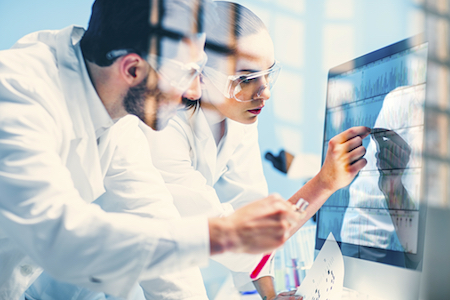 How do biotechnology patents affect the generation, use and distribution of genetically modified organisms, such as knockout mice or transgenic animal models? What is a licensing agreement and what are the implications of licensing (or not licensing) methods and technologies used in biomedical research? Can you use the new model you recently obtained from a collaborator for your research program?
How do biotechnology patents affect the generation, use and distribution of genetically modified organisms, such as knockout mice or transgenic animal models? What is a licensing agreement and what are the implications of licensing (or not licensing) methods and technologies used in biomedical research? Can you use the new model you recently obtained from a collaborator for your research program?
What Do Biotechnology Patents Cover?
In a nutshell, patents protect intellectual property by granting inventors the right to exclude others from making, using or selling their invention. Each country has its own procedures governing how inventions are defined, evaluated and patented. Due to the complexity of the patent granting processes, we will only discuss granted patents in this article. Patents can cover pretty much any technology used in the modification of the mouse or rat genome, even extending to specific applications or defined genomic modifications.- Patents may cover gene targeting technologies, as with those held by Cellectis for the use of homologous recombination to insert or replace DNA fragments in mouse embryonic stem cells, or the patents issued to Broad/MIT for the use of CRISPR/Cas9 gene editing technology.
- Patents can also cover methods applied to a genetically modified mouse or rat. To cite one case, the French institutes CERBM and IGBMC own a patent describing the use of the drug tamoxifen to induce Cre recombinase activity in vivo in a transgenic mouse.
- Genetic modifications can be patented as well, as in the case of Regeneron's humanization of the mouse interleukin-15 gene.
Patent Licensing Agreements
In order to use a technology or a method described in a patent, an institution needs to acquire a license. Patent licenses grant permission to make, use and sell an invention described within a patent document, and is usually granted by the patent owner. Patent licenses come in two types: non-exclusive or exclusive.- A non-exclusive license grants the licensee rights to make, use and sell the patented invention, and allows the licensor to grant licenses to multiple licensees.
- An exclusive license, on the other hand, is a promise of the licensor to not grant rights of use to additional licensees. Importantly, issuing an exclusive license does not invalidate previous non-exclusive licenses.
On the other hand, patent infringement can be rather expensive for for-profit companies. Regeneron recently had to pay Cellectis over $15M for not following the terms of their homologous recombination license agreement.
Interestingly, many for-profit companies partner up with non-profit institutions in order to access genetically modified animal models licensed for basic research by academic laboratories. In these collaborations, the for-profit institution should take into consideration whether or not the non-profit institution has rights to permit use of the mouse model by a for-profit entity; otherwise, the for-profit partner may find itself liable for the infringement of patents covering the generation of the mouse model.
Due Diligence
As a general rule, whether generating a new mouse model or acquiring an existing one, it is a good idea to investigate the patent landscape surrounding the technology related to the specific model and the methods that may be applied to it.While this may be burdensome, most model generation companies will not accept any liability for patent infringement and delegate the acquisition of all relevant licenses to the customer. This "buyer beware" attitude leaves your organization liable for any infringement under patent law.
In contrast, Taconic is fully licensed for the use of the most commonly used technologies for the generation of mouse models and passes to customers the right to use newly generated models in their research programs.
















.jpg)

.jpg)
.jpg)
.jpg)
.jpg)





.jpg)


.jpg)
.jpg)




.jpg)




.jpg)

.jpg)




